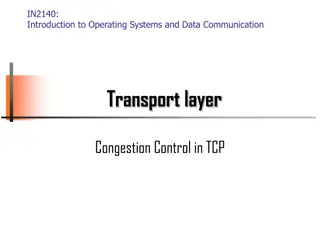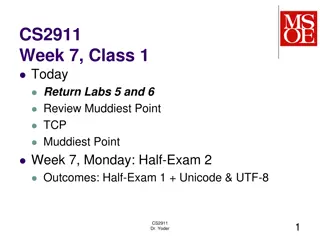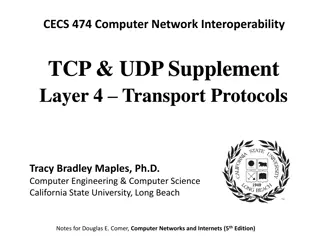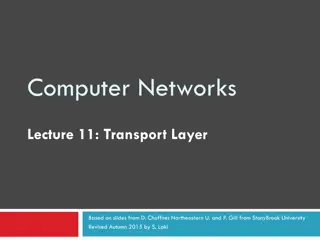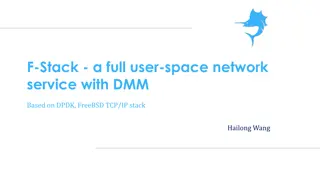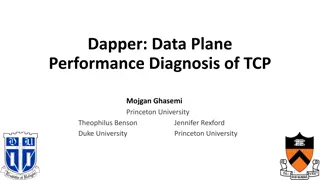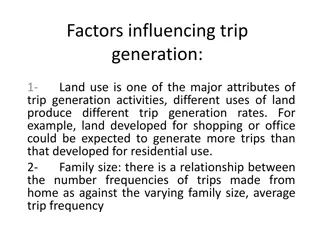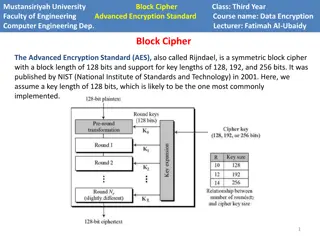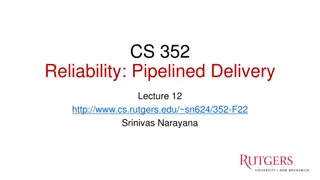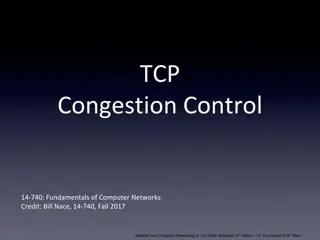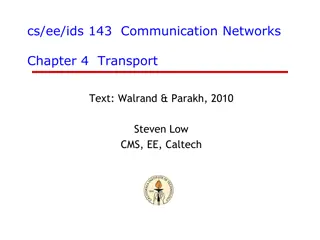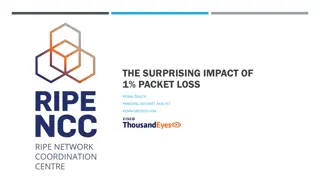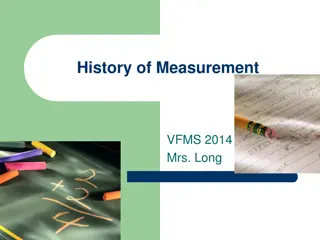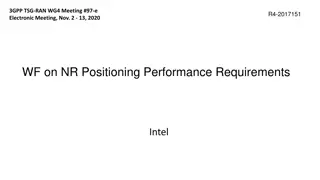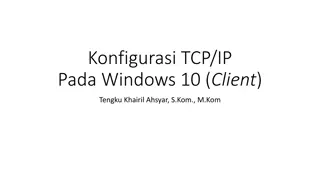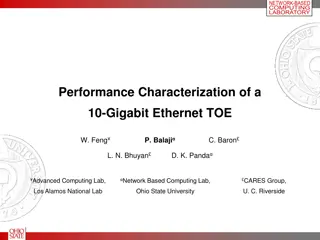Understanding TCP Round-Trip Time Measurement
This presentation delves into the importance of measuring TCP round-trip time in the data plane, highlighting key reasons such as security against BGP hijacks and IP spoofing, performance enhancements, and improving user Quality of Experience. It explores monitoring at a vantage point, TCP sequence numbers, table with timestamps, challenges like delayed ACK, and multi-stage hash tables to optimize measurement accuracy.
Download Presentation

Please find below an Image/Link to download the presentation.
The content on the website is provided AS IS for your information and personal use only. It may not be sold, licensed, or shared on other websites without obtaining consent from the author. Download presentation by click this link. If you encounter any issues during the download, it is possible that the publisher has removed the file from their server.
E N D
Presentation Transcript
Measuring TCP RTT in the data plane Xiaoqi Chen, Hyojoon Kim, Javed M Aman, Willie Chang, Mack Lee, Jennifer Rexford
Why measure round-trip time? Security BGP hijack, inter-ISP path change IP spoofing Performance Persistent link congestion Infer user Quality of Experience (QoE) 2
Monitoring at a vantage point Internet Passive monitoring: split client- server RTT into two legs1 Run a programmable switch at the vantage point? Line-rate traffic, multiple samples per flow Directly in data plane, enabling real-time reroutes External Leg Vantage Point Internal Leg Client 1Cziva et al. Ruru: High-speed, Flow-level Latency Measurement and Visualization of Live Internet Traffic. SIGCOMM 2017 3
TCP sequence numbers Internet External Leg Vantage Point Internal Leg External Leg RTT Internal Leg RTT Internal Leg RTT External Leg RTT Client 4
A table with timestamps expected ACK: SEQ + Len T=105 Flow id, eACK Timestamp Outgoing Packet A->B, SEQ=1001, Len=3 (eACK=1004) (A->B, 1001) T=101 Insert record (A->B, 1004) T=105 Match & erase (A->C, 1050) T=122 RTT = 3 T=125 Incoming Packet C->A, ACK=1050 (D->E, 1020) T=107 5
Challenge: delayed ACK Issue 1: ACK is not immediate, might be delayed for 50ms Solution: heuristics Look at ACKs for MTU-sized packets, likely not experiencing delay Issue 2: Many packets never receive their ACK Solution: lazy-expiration of entries An entry is considered timed out when timestamp is too old Upon table insertion, check timestamp and erase old entry 6
Multi-stage hash tables h2(fid, eACK) h4(fid, eACK) h1(fid, eACK) Flow id: * eACK: *** h3(fid, eACK) Stage 1 Stage 2 Stage 3 Stage 4 T=* Occupied Occupied Expired Expired Occupied Outgoing Packet Insert record Occupied Occupied Occupied Expired Occupied Occupied Occupied Expired Inserted Occupied Per-stage random hash functions Multiple chances to sidestep hash collisions 7
Multi-stage hash tables h2(fid, ACK) h4(fid, ACK) h1(fid, ACK) h3(fid, ACK) fid reversed ACK: *** Stage 1 Stage 2 Stage 3 Stage 4 T=* Occupied Occupied Expired Expired Occupied Incoming Packet Query record Expired Occupied Expired Expired Expired Matched RTT Occupied Occupied Occupied Occupied Check every stage, until a match is found 8
Evaluation Traffic: captured from 10Gbps campus border links Metric: % of RTT samples matched Parameters for multi-stage hash table: Size per table (# of entries) Total number of tables 9
Evaluation 100% Better 75% Match rate 50% 25% 0%212 (32KB) 213 214 215 216 (0.5MB) Size per table (# entries) 10
Deployment Internet University campus deployment External Leg Mirrored traffic, non-invasive External leg: cloud service latency monitoring Internal leg: Wi-Fi client latency diagnostics Mirrored Vantage Point Tofino Internal Leg Campus 11
Summary, Q&A Match TCP SEQ/ACK numbers for RTT samples Multi-stage hash table with lazy expiration of entries Tested & deployed on 10Gbps campus border links Our P4 code is open-source! github.com/Princeton-Cabernet/p4-projects 12


